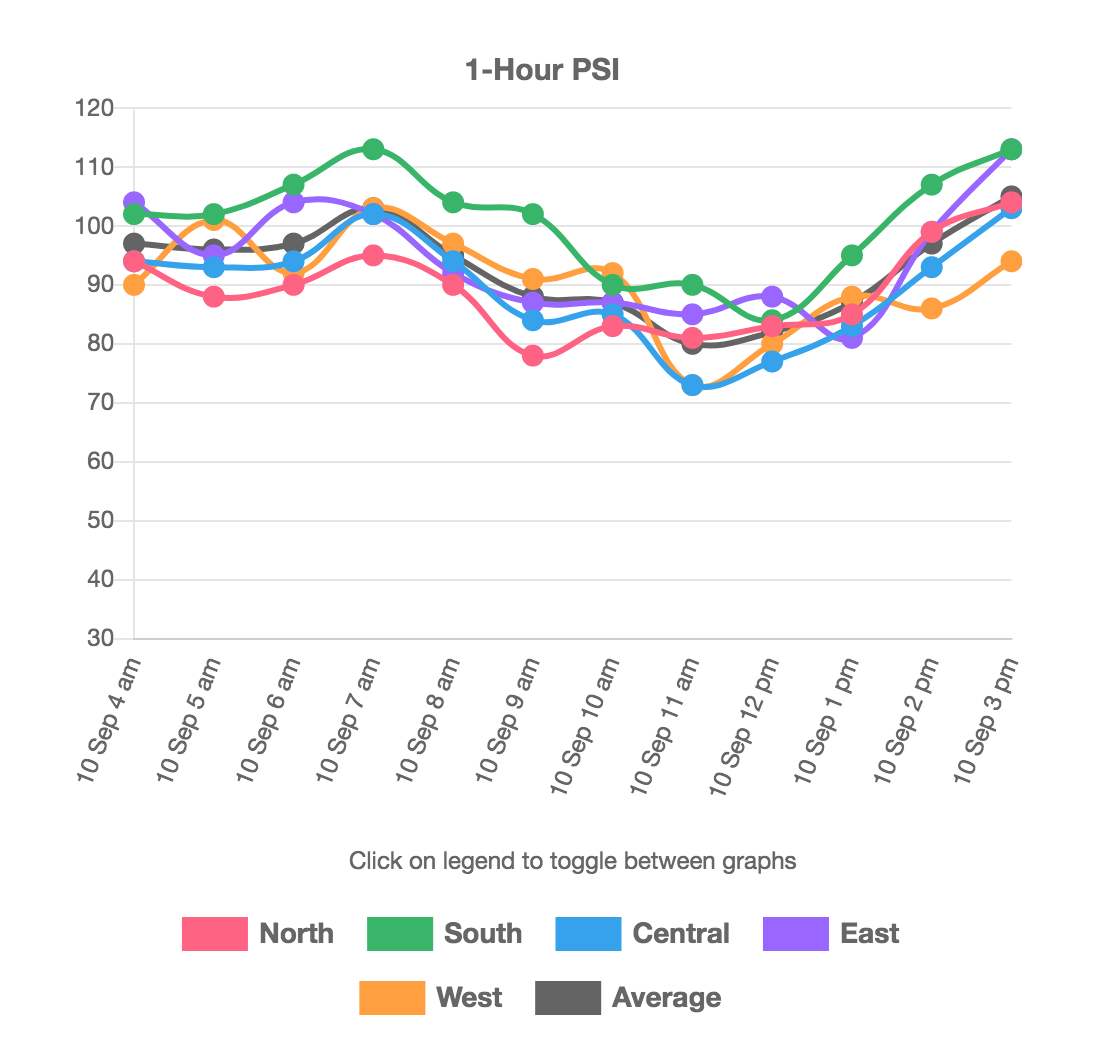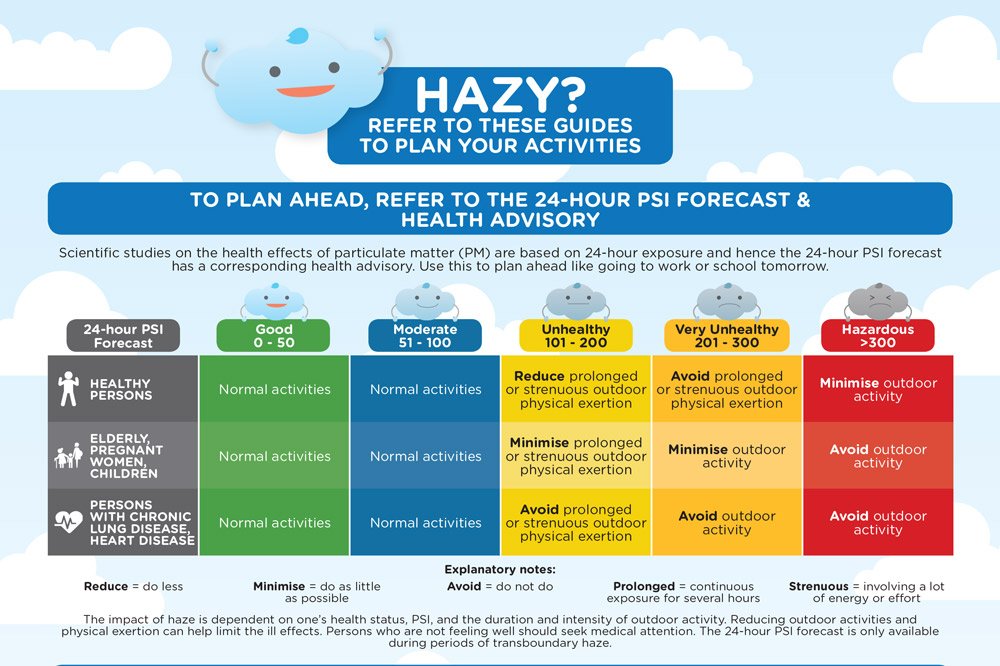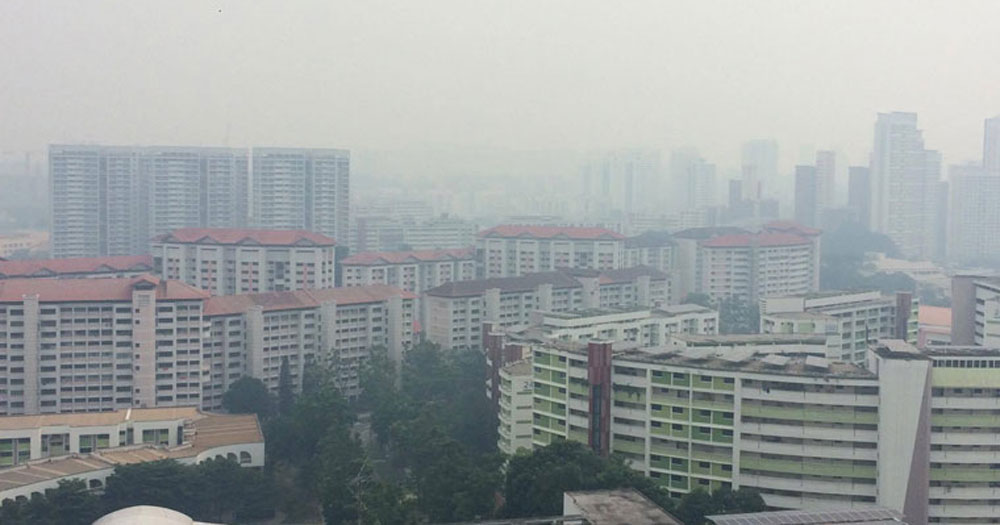The Pollutant Standards Index (PSI) in Singapore is expected to be in the high end of the "Moderate" range for the rest of Tuesday, Sept. 10.
It may even enter the "Unhealthy" range, according to a 2pm update from the National Environment Agency (NEA).
The PSI reading is a measurement calculated based on six pollutants that include particulate matter (PM10), fine particulate matter (PM2.5), sulphur dioxide (SO2), carbon monoxide (CO), ozone (O3) and nitrogen dioxide (NO2).
Haze conditions in Singapore may worsen
The NEA said that the one-hour PM2.5 concentration readings over the next 24 hours are expected to be between the normal and elevated range.
However, the agency warned that the PSI for the next 24 hours is expected to be in the high end of the Moderate range.
Depending on wind conditions and the haze situation in Sumatra, the PSI level in Singapore may enter the "Unhealthy" range on Sept. 10 if the wind continues to blow the haze from the southeast or south direction.
NEA also added that the weather has remained dry in central and southern Sumatra.
Moderate to dense smoke haze continued to emanate from persistent hotspots in the provinces of Riau and Jambi.
The build-up of smoke haze over Sumatra has been carried over to Singapore and Malaysia.
At 2pm, the NEA reported that the average 24-hour PSI was between 86 and 98, inching to the "Unhealthy" range which is between 101 and 200.
While one-hour PSI is not an official indicator of the air quality used by NEA, the one-hour PSI level for north, south, east and central of Singapore at 3pm has hit above 100, according to Bliss Air.
This probably explains the haze you smell or feel during lunchtime.
 Screenshot from Bliss Air.
Screenshot from Bliss Air.
Health advisory
With the forecast, NEA has also advised healthy individuals to reduce prolonged or strenuous outdoor activities.
Those with chronic lung or heart disease should avoid prolonged or strenuous outdoor physical exertion entirely.
For those who are feeling unwell due to the hazy conditions should seek medical help promptly.
It should be noted that the agency refers to the 24-hour PSI level primarily for health advisories and air quality indicators since 2015.
Back then, the project director and chief scientific officer Indrani Rajaram from the NEA's pollution control department highlighted that converting raw pollutant concentration data into one-hour PSI readings is not supported by health studies.
Besides average 24-hour PSI, another good indicator will be the 1-hour PM2.5 concentration readings if one needs a reference to the air quality before heading out for physical activities, such as a jog.
 Image from NEA.
Image from NEA.
Top photo from Belmont Lay
If you like what you read, follow us on Facebook, Instagram, Twitter and Telegram to get the latest updates.
